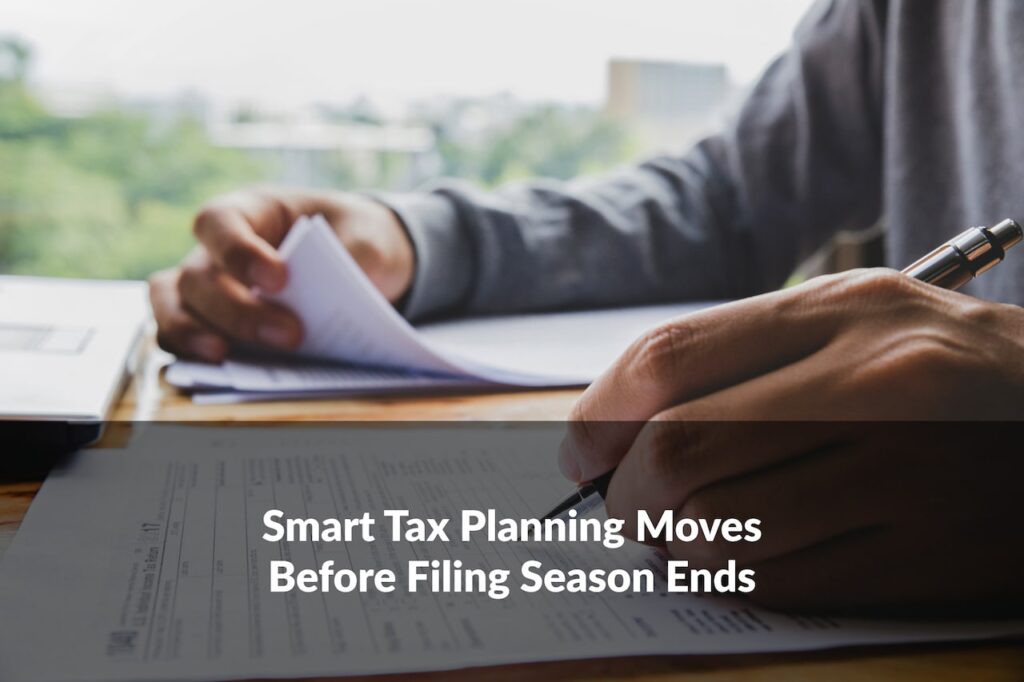As the clock ticks closer to the end of tax filing season, many people find themselves gathering paperwork, reviewing deductions, and assessing their financial picture. While tax season can feel overwhelming, it also provides a great opportunity to make strategic choices that could positively influence your financial outcomes. Whether you’re a seasoned taxpayer or a first-timer, making smart moves for tax filing season can make a difference. So, before the filing deadline approaches, let’s explore the actionable steps that could help you adjust your refund, address your liabilities, and prepare effectively.
1. Contribute to Tax-Advantaged Accounts
One way to lower your taxable income is by contributing to accounts like a traditional IRA or a Health Savings Account (HSA). For the 2024 tax year, you can contribute up to $7,000 to an IRA ($8,000 if you’re 50 or older) and up to $4,150 to an individual HSA ($8,300 for a family). Contributions to these accounts are tax-deductible, and you have until the filing deadline—April 15th, 2025—to make them count for the previous year. If you’re not sure how much room you have to contribute, reviewing your recent account statements or consulting a financial planner may help.
2. Double-Check Your Filing Status
Your filing status can significantly impact your tax liability. For instance, if you recently got married, you may need to decide whether to file jointly or separately. Or, if you’re a single parent, you may qualify for head-of-household status, which often provides more favorable tax terms than filing as single. Review the IRS guidelines or speak with a tax preparer to identify the filing status that best fits your circumstances.
3. Review Deductions and Credits
Deductions and credits can reduce your tax bill, but only if you identify and apply them correctly. Common deductions include student loan interest, medical expenses exceeding 7.5% of your income, and mortgage interest. On the credit side, consider options like the Child Tax Credit, Earned Income Tax Credit (EITC), and education-related credits such as the Lifetime Learning Credit. Keeping detailed records of qualifying expenses may make applying these benefits more straightforward.
SEE ALSO: Gifting Shares of Stock to Charity: A How-To Guide
4. Organize Your Paperwork
Filing your taxes accurately and efficiently often starts with organization. It can help to create a checklist of all the documents you need, including W-2s, 1099s, and any receipts for deductible expenses. If you’ve made charitable donations, confirm that you have proper documentation for those as well. Keeping your financial records organized can help you streamline the filing process and reduce the likelihood of errors.
5. Consider Tax-Loss Harvesting (If Applicable)
If you have investments in taxable accounts, tax-loss harvesting may be a useful strategy. By selling investments that have declined in value, you can offset gains elsewhere in your portfolio and potentially reduce your taxable income. Keep in mind tax-loss harvesting must be done by the last business day of each year. Before selling anything, you’ll want to be sure that this strategy aligns with your financial goals, so it may be helpful to discuss it with a financial advisor first.
6. Plan for Quarterly Estimated Taxes (If Applicable)
For freelancers, contractors, and business owners, estimated taxes are an important part of financial planning. If you’ve experienced underpayment penalties in the past, now could be a good time to review your estimated tax payments for the current year. The IRS requires quarterly payments to cover your expected tax liability, so revisiting your strategy may help you avoid surprises next year.
7. File Early to Avoid Last-Minute Stress
Filing your taxes early offers several potential benefits. Early filers often experience faster refunds and may encounter fewer identity theft issues. Additionally, completing your taxes ahead of the deadline allows time to address any complications without added pressure. If you’re expecting a refund, filing early means you’ll receive it sooner.
SEE ALSO: Tax Loss Harvesting: A Proactive Approach to Tax Planning in Investing
8. Seek Assistance When Needed
Tax laws can be complex and change frequently. So, consulting a tax professional or using tax preparation software could help provide clarity, identify deductions or credits you might have overlooked, and help you file accurately. While this service may come with a cost, it could also provide valuable insights for your tax situation.
9. Review Your Withholdings
If you received a large refund or owed a significant amount last year, now might be a good time to adjust your tax withholdings. While a big refund might feel like extra income, it essentially means the government held your money interest-free. Conversely, owing taxes can create financial strain. Using the IRS’s online withholding calculator or speaking with your HR department can help you make adjustments that align with your financial situation.
The Bottom Line: Smart Moves for Tax Filing Season
Making thoughtful moves during tax filing season isn’t just about managing liabilities or adjusting refunds—it’s about taking a deliberate approach to your financial situation. By contributing to tax-advantaged accounts, staying organized, and seeking support when needed, you can approach this filing season with more clarity and confidence. By acting early, you allow for greater flexibility, so consider implementing these strategies now to help you navigate the season effectively.
At Davidson Capital Management, we understand the importance of making informed financial decisions during tax season. If you’re looking for guidance to navigate tax planning or need active discretionary investment management, our team is here to help. Contact us today to take advantage of our portfolio review and analysis checkup.




